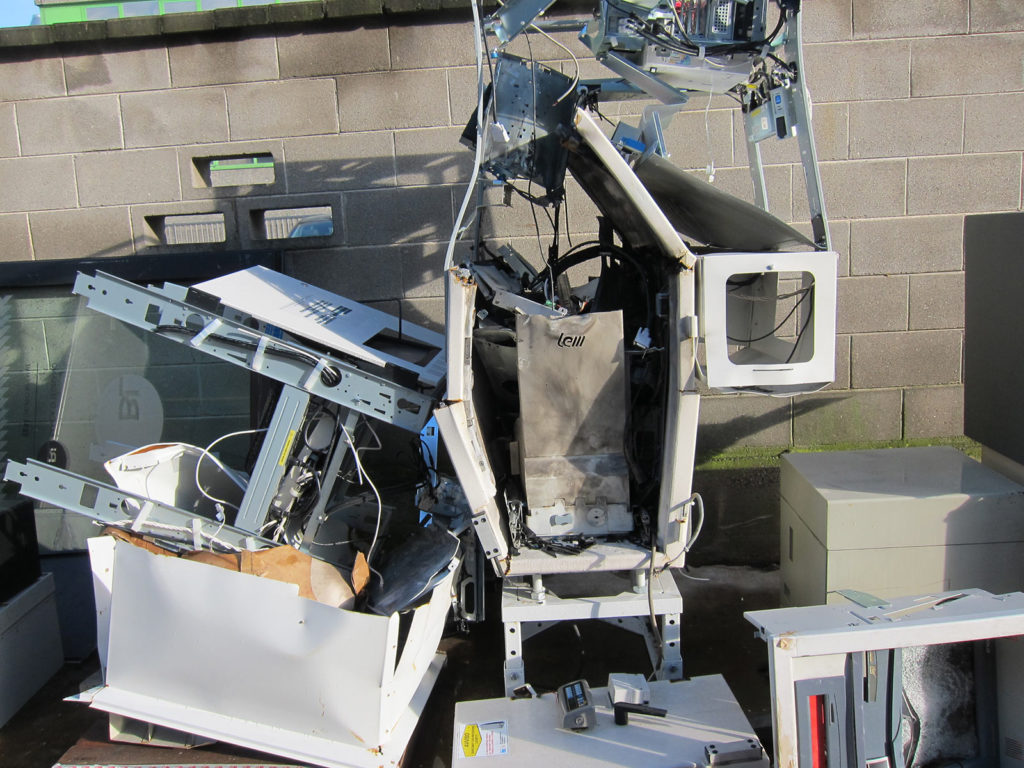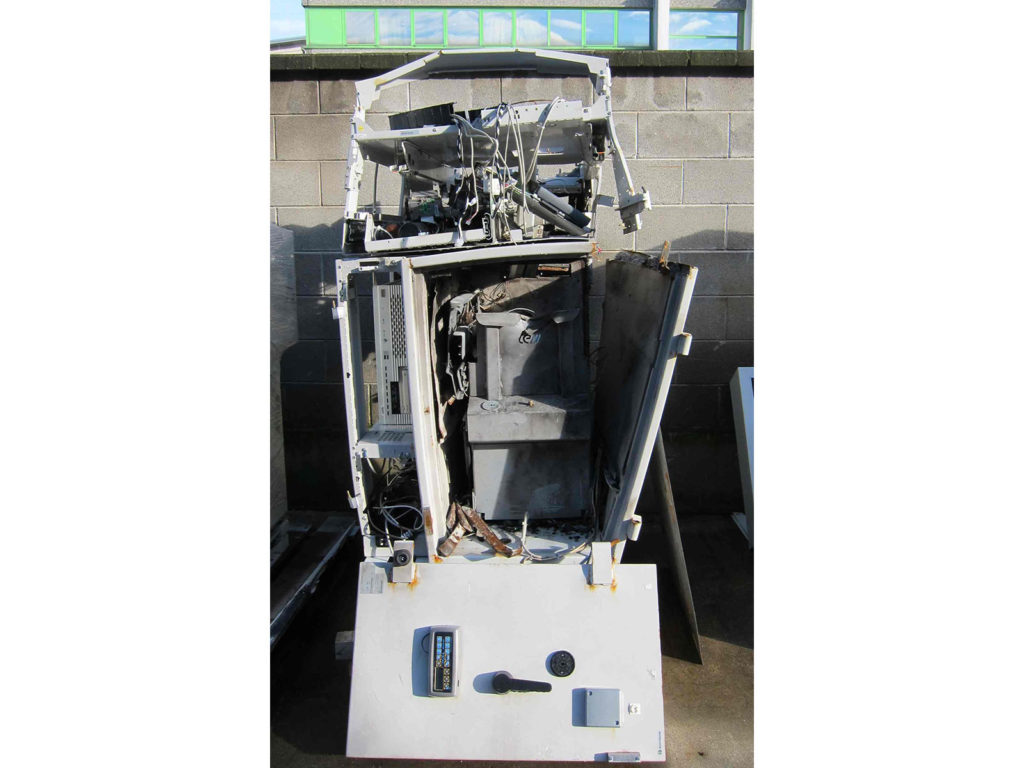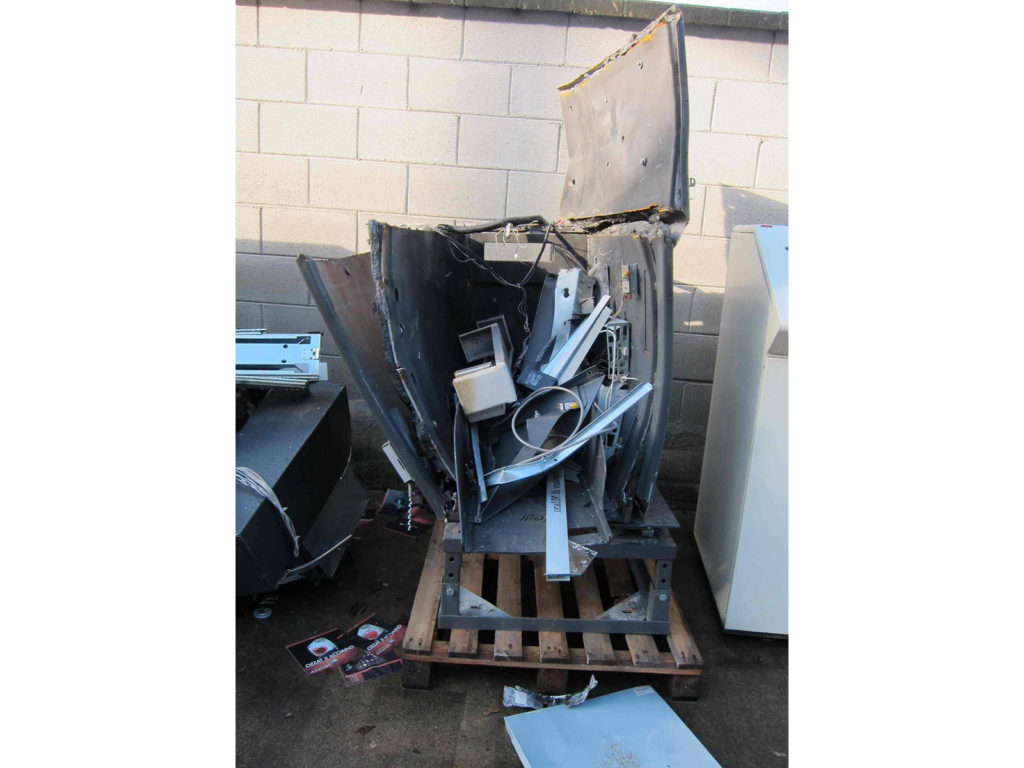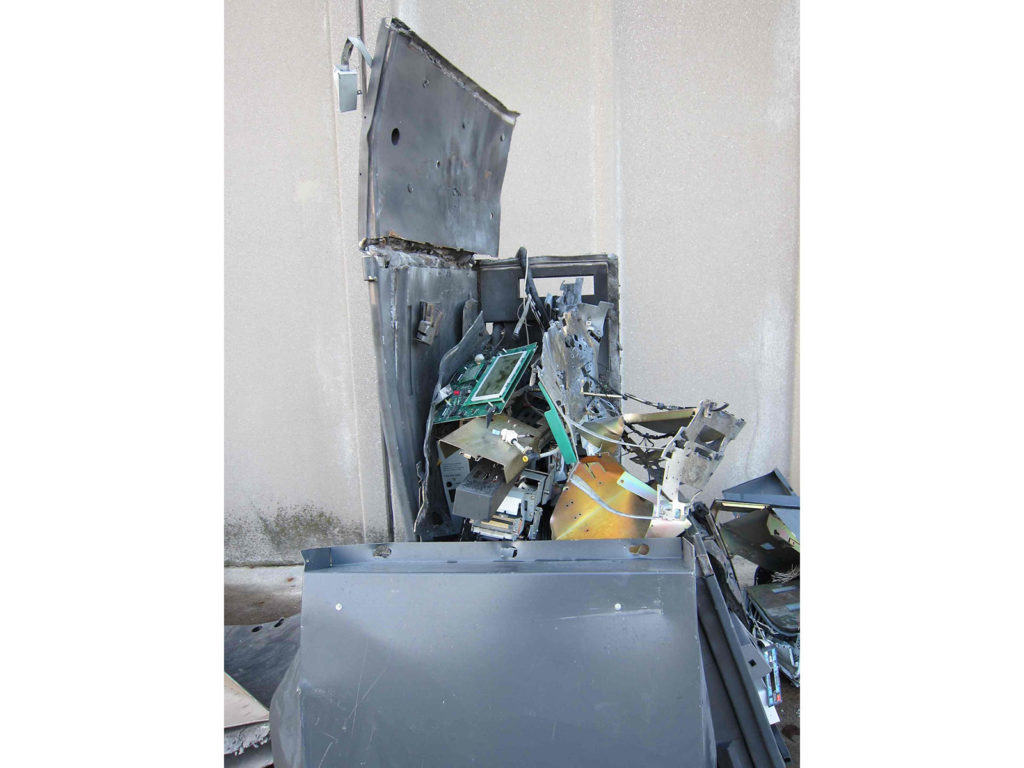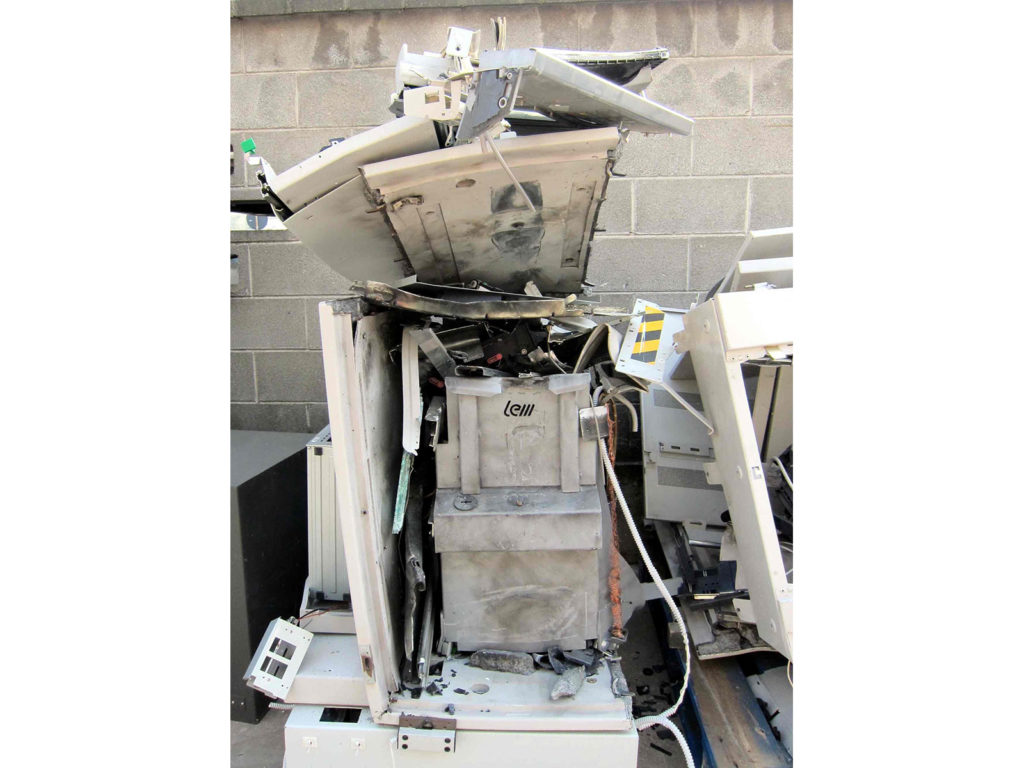This device is to be placed inside the ATM, in front of the banknote cassettes fastened to the base of the safe.
Forced opening of the ATM door prevents the cassettes from being removed from their seats.
It protects the front and sides of the cassettes as well as the bottom, even if there are gaps between the safe and the banknote dispensing device.
Protection Barrier of the ATM cassettes
Protection Barrier of the ATM cassettes
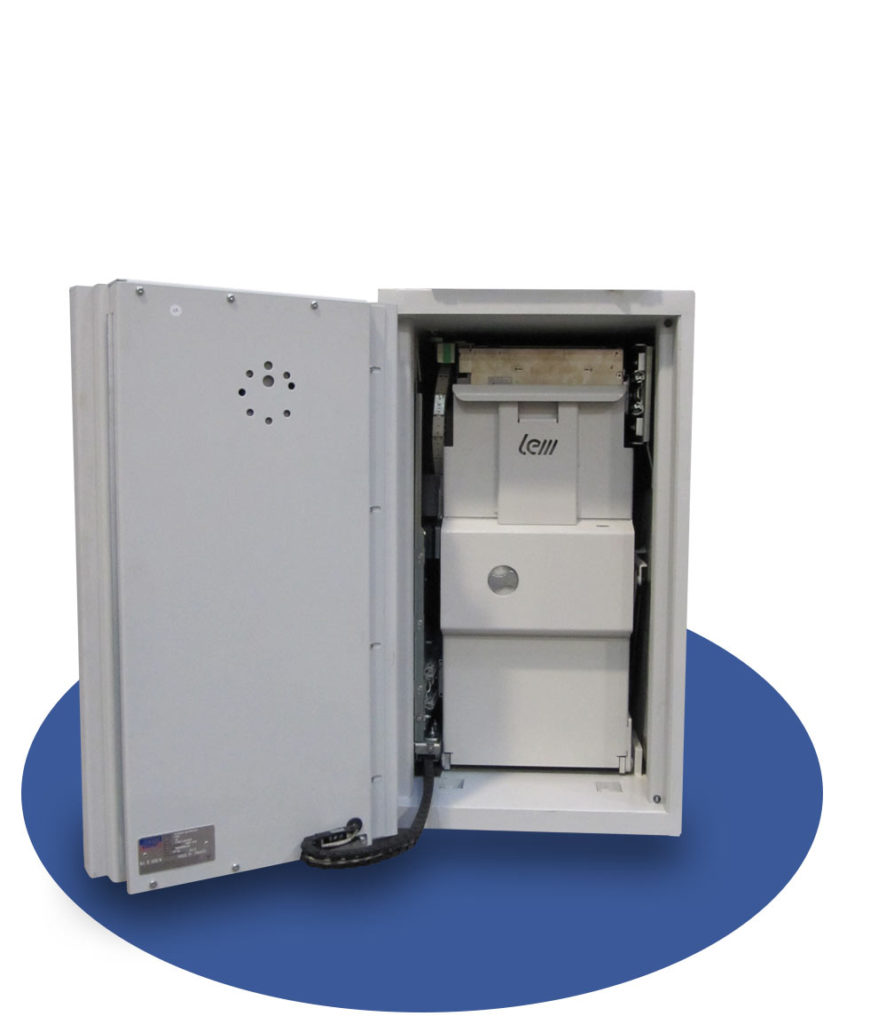
It is fully constructed in anti-torch austenitic steel to counteract the oxyacetylene flame.
The tiltable part is anchored firmly to the base with two robust deadbolts (one on each side) controlled by a designated knob and lock.
It can be opened using a security key, of the interchangeable type or a motorised electronic lock associated with the Hal 600 or Duo 4000 electronic combination.
It is an additional element to the AntiGas Tutor system aimed at deterring criminals from attacking ATMs.
It does not modify measurements in relation to ATM installation.
It can be installed on all brands of ATMs with 3 banknote cassettes or 2 cassettes plus a Tutor banknote ink staining system.
The resistance to explosion of the ATM has been tested at the CESI laboratories in Milan.
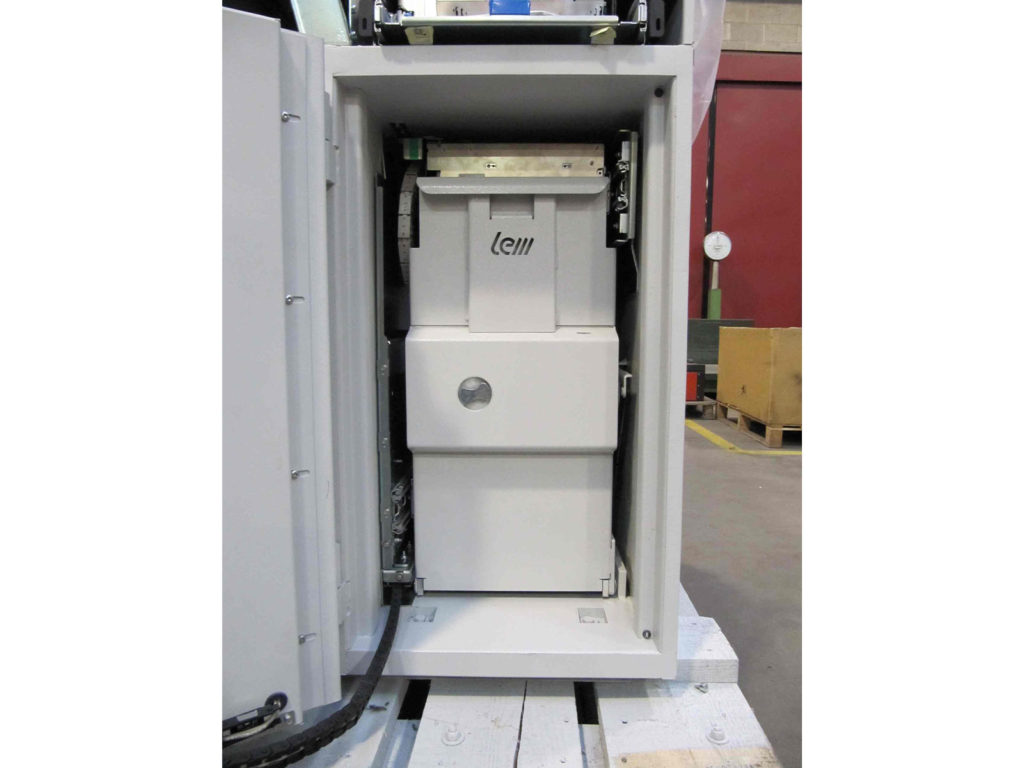
LEM ATM CASSETTE PROTECTION REAL ATTACK with solid explosive
Attacks against ATMs with solid explosives are becoming ever more common.
The ATM naturally explodes causing damage to the building however the protection of the cassettes remains in position, preventing the banknotes from being stolen.
The cassette protection, tested in designated laboratories and on Lem premises with regards to the resistance of the ATM which was subjected to an explosion with a mixture of oxygen/acetylene gas, had never before been tested using solid explosives.
This test, which cannot be carried out in the Lem laboratories or “bunker”, was instead carried out directly in the “field”, demonstrating how the design and construction of the Lem cassette protection has provided excellent results thanks to the materials and mechanical devices used, as well as the solidity of the closure.
The photos below clearly show what happened after the explosion.

